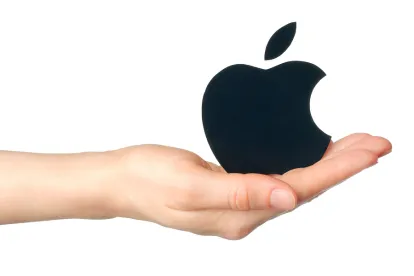On July 13, 2020, the Patent Trial and Appeal Board (PTAB or Board) designated as informative two opinions applying its now precedential Apple Inc. v. Fintiv, Inc. opinion, which set forth factors governing the exercise of the PTAB’s discretion to deny institution of a post-issuance proceeding. In these two informative opinions, Apple Inc. v. Fintiv, Inc. (a follow-on to the just-mentioned precedential opinion) and Sand Revolution II, LLC v Continental Intermodal Group-Trucking LLC, the PTAB reached opposite conclusions in determining whether to deny institution. Here, we discuss how the PTAB applied the Fintiv factors in each fact situation, and offer some practice tips for PTAB practitioners and patent litigators.
The Six Fintiv Factors
Apple filed its IPR petition in late October 2019. At that point, a trial date had not yet been set in the parallel district court litigation.[1] By the time Fintiv filed its preliminary response on February 2020, the district court had set a trial date for mid-November 2020. In its preliminary response, Fintiv requested discretionary denial of Apple’s petition pursuant to 35 U.S.C. § 314(a), citing an earlier PTAB precedential opinion, NHK Spring Co., Ltd. v. Intri-Plex Techs., Inc. In light of the impending trial date in the parallel proceeding, on March 20, 2020, the PTAB requested additional briefing from the parties on six factors deemed relevant to a decision whether to deny institution, namely:[2]
-
whether the court granted a stay or evidence exists that one may be granted if a proceeding is instituted (existence of a stay weighing strongly against discretionary denial);[3]
-
proximity of the court’s trial date to the Board’s projected statutory deadline for a final written decision (FWD) (a trial date preceding the date of FWD weighing in favor of discretionary denial); [4]
-
investment in the parallel proceeding by the court and the parties (district court issuance of substantive orders related to patent at issue, or claim construction orders weighing in favor of discretionary denial); [5]
-
overlap between issues raised in the petition and in the parallel proceeding (a greater degree of overlap weighing in favor of discretionary denial, taking into account overall the similarity of claims challenged in a petition to claims at issue in district court); [6]
-
whether the petitioner and the defendant in the parallel proceeding are the same party (lack of relation tending to weigh against discretionary denial, but to be considered in conjunction with factor 4, overlap of issues);[7] and
-
other circumstances that impact the Board’s exercise of discretion, including the merits (without necessarily going into a full merits analysis, a stronger petition would tend to weigh against discretionary denial, while a weaker petition would tend to weigh in favor of discretionary denial). [8]
According to the PTAB, “these [six] factors relate to whether efficiency, fairness, and the merits support the exercise of authority to deny institution in view of an earlier trial date in the parallel proceeding.”[9] Further, “in evaluating these factors, the Board takes a holistic view of whether efficiency and integrity of the system are best served by denying or instituting review.”[10]
Apple v. Fintiv and Sand Revolution v. Continental – the Informative Opinions
In response to the Board’s now precedential March 20, 2020 Order, Apple and Fintiv submitted supplemental briefing on the Fintiv factors. After evaluating the parties’ arguments, the PTAB exercised its discretion and on May 13, 2020, it denied institution of Apple’s petition.
In Sand Revolution, the PTAB had initially denied institution of Sand Revolution II, LLC’s petition under the earlier NHK precedential opinion. In response to Petitioner’s Request for Rehearing[11] and in view of the March 20, 2020 articulation of the Fintiv factors, the PTAB ordered supplemental briefing on the application of those factors. Here, the PTAB reversed its initial denial and on June 16, 2020, granted institution of Sand Revolution’s petition.
Comparing Apple and Sand Revolution
Given the different outcomes of the PTAB’s decisions in Apple and Sand Revolution, it is worth comparing the application of each case’s facts to the Fintiv factors. The following table summarizes how the PTAB evaluated the facts applicable to each of the six Fintiv factors in the two cases:

Delay and uncertainty in the trial date favors institution
The more certain and earlier the trial date, the more likely the PTAB will deny institution. Even though courts often move civil trials around to accommodate criminal dockets, if a court assigns a date certain for trial, the PTAB seems to be willing to take the court at its word. If the trial date is after the PTAB’s FWD, a court is unlikely to address invalidity issues ahead of the FWD. But if the court appears to have done a lot of work on claim construction, the PTAB will weigh that work in favor of discretionary denial. While the PTAB has not said so explicitly, it may be relevant that the claim construction standards now are the same in both fora.
- As a patent owner and plaintiff, consider whether seeking extensions to the Markman hearing and trial dates are in your client’s best interests. If extensions make these dates less certain or too far out in time, they may weigh in favor of denial of institution of an IPR petition. Where the infringement case appears fairly clear, a patent owner may want to look for opportunities for early claim construction.
- As a petitioner and defendant, do not delay in filing IPR petitions. File them as soon as possible in order to help ensure that the PTAB’s FWD occurs well before trial. For example, have your prior art selected early so that you can submit a petition within a reasonable time after disclosure of the asserted claims in the infringement contentions (or other identification of asserted claims).
More overlap favors denial of institution
The more overlap between prior art in the litigation and prior art in the petition, the more likely the PTAB will deny institution. Non-overlapping parties may weigh against discretionary denial, but the PTAB still may look to proceedings involving the same patent(s) as part of the evaluation.
- As a petitioner and defendant, distinguish the invalidity defenses to be pursued in court from those pursued in the IPR petition. For example, consider excluding from the invalidity contentions presented in litigation any prior art or prior art combinations presented in the IPR petition, or stipulate to not pursue petition grounds in the district court in the event of institution to help get the petition granted. At the same time, include use-based (non-publication-based) prior art in district court.
- As a patent owner and plaintiff, look for and emphasize similarities between the arguments presented in the IPR petition and in the litigation. A strong attack on the merits of the petition may also be helpful, because a weak petition is more likely to be denied than a strong one.
Closing Thoughts
The Fintiv factors indicate that the PTAB is concerned about preserving the efficiency and integrity of the patent system and are willing to look at events and circumstances outside the USPTO in making a determination as to whether to deny a petition. One issue to watch is how the PTAB will consider a petition on a patent involved in multiple, ongoing lawsuits at the same time. If a trial or Markman order is likely to occur in one or more of these lawsuits before the one-year deadline for a FWD, the PTAB may decline to institute an IPR proceeding in the interim. This may motivate patent owners to file multiple parallel lawsuits in different courts, to increase the chances of an early Markman hearing and/or an earlier trial date. Conversely, this may encourage more cooperation with accused infringers, e.g., to coordinate extended schedules or seek stays in their respective lawsuits.
[1] Fintiv, Inc. v. Apple Inc., 6:18-cv-00372-ADA (WDTX).
[2] IPR2020-00019, Paper 11 at 6.
[3] Id. at 6-9.
[4] Id. at 9.
[5] Id. at 9-11.
[6] Id. at 12-13.
[7] Id. at 13-14.
[8] Id. at 14-16.
[9] Id. at 6.
[10] Id.
[11] IPR2019-01393, Paper 15 (March 6, 2020), Paper 19 (April 7, 2020), and Paper 24 at 2 (June 24, 2020).





 />i
/>i

